WHAT’S IN A NAME? Near East Relief Through the Years
There is enough confusion about this issue that your loyal curator thought it was time for a Dispatch. Let’s demystify the many names of Near East Relief.
MANY NAMES, ONE MISSION
Imagine that you are learning about America’s response to the Armenian, Assyrian, and Anatolian Greek Genocide for the very first time. The topic is new to you, and you are finding it both fascinating and complex.
You jump into the many resources that are available online: this Digital Museum Exhibit; archives with photos and letters from relief workers; educational websites dedicated to this historical period. Before you know it, you’re looking at a selection of dramatic posters produced by the “American Committee for Relief in the Near East” online.
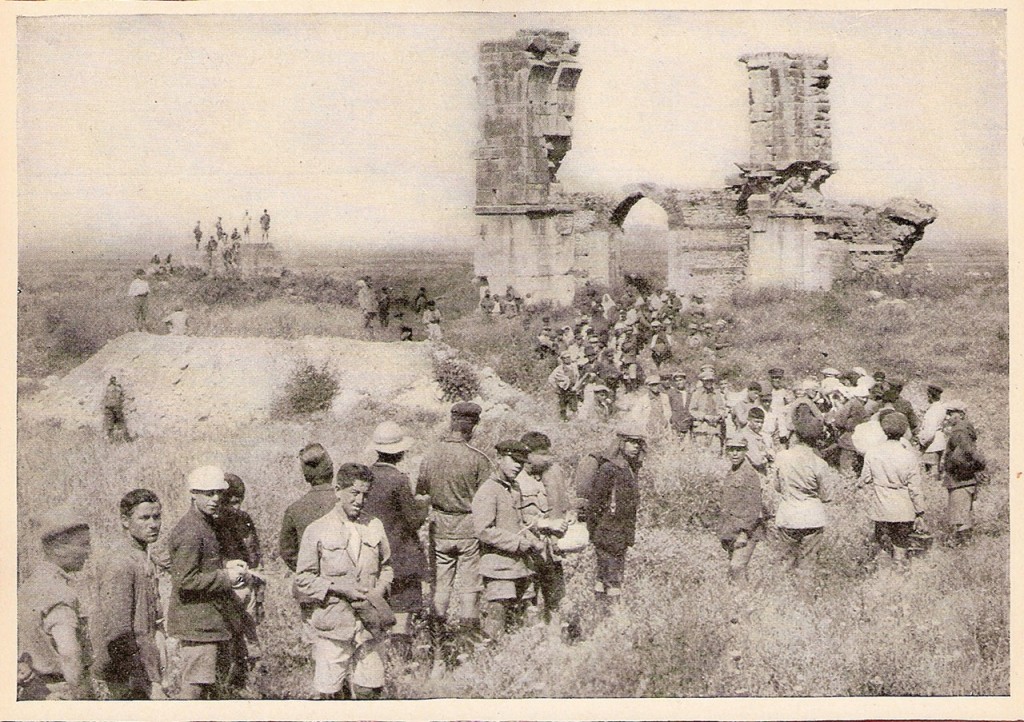
Young Near East Relief farm colonists in Greek Macedonia, c. 1923.
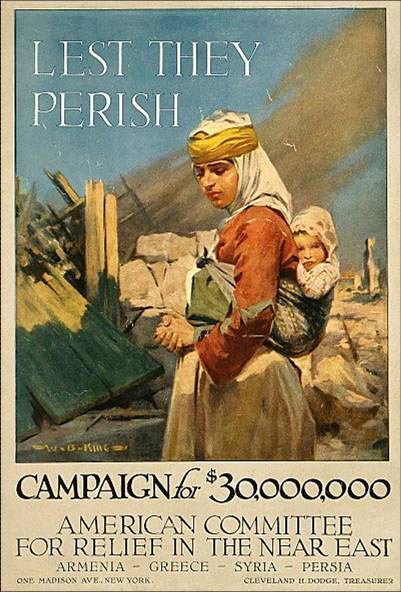
Perhaps you venture to an academic library, like the excellent one at Columbia University, to explore some unscanned special collections.
You might uncover fascinating correspondence between the American Committee for Armenian Relief and prominent newspapers of the time. A few of the letters probably include eyewitness accounts of the Genocide that were smuggled out of Ottoman Turkey!
You might also discover a series of colorful fundraising pamphlets for the American Committee for Armenian and Syrian Relief. A few boxes later, you’re sorting through photos stamped “Near East Relief” on the back.
Eager to learn more, you make an appointment at the Rockefeller Archive Center to study the Near East Foundation collection.
Wait a second. Are you researching one organization, or five?
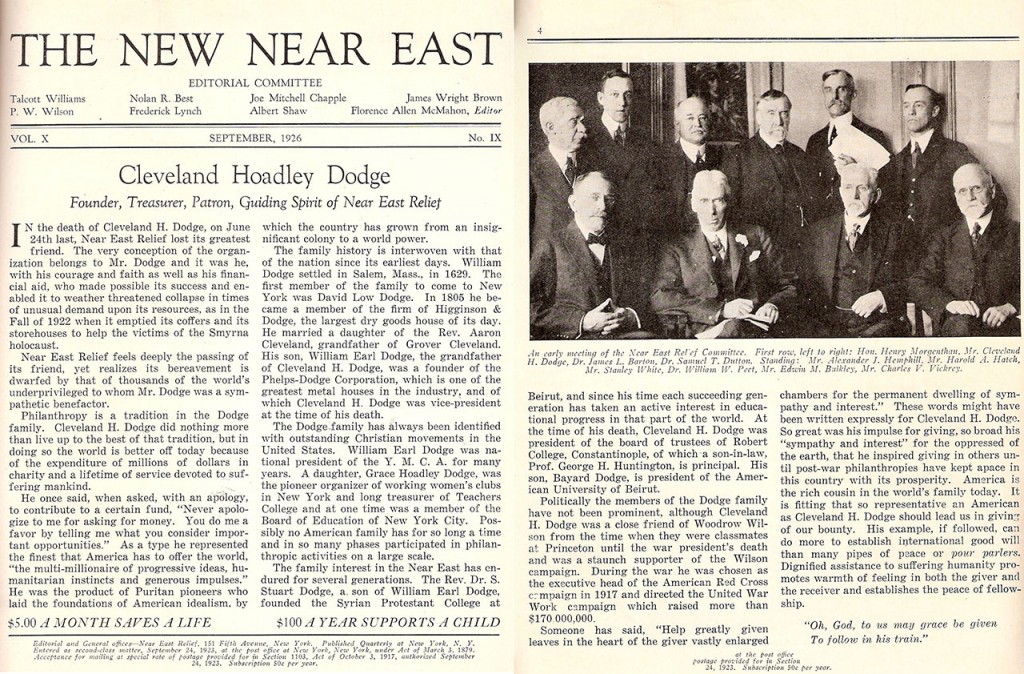
The Board of the American Committee for Armenian and Syrian Relief upon Ambassador Morgenthau's (bottom left) return from Constantinople, 1916.
AN EXPANDING SCOPE OF WORK
Rest assured that these documents all refer to the same entity. The Board of Directors summed it up nicely in Near East Relief’s 1927 Report to Congress:
“Near East Relief has done its work during the past 12 years under four different names:
The American Committee for Armenian Relief, September 16, 1915, to November 20, 1915.
The American Committee for Armenian and Syrian Relief, November 20, 1915, to June 27, 1918.
The American Committee for Relief in the Near East, June 27, 1918, to August 6, 1919.
Near East Relief, the name by which it was incorporated by Congress, since August 6, 1919.
These four names reflect the steadily expanding scope of Near East Relief’s work and the transition from the emergency service of the first committee to the well-developed educational and reconstruction program of the present corporate organization.”
These name changes create confusion, but they also provide an unexpected benefit. The name can give us a rough idea of when an undated document was produced.
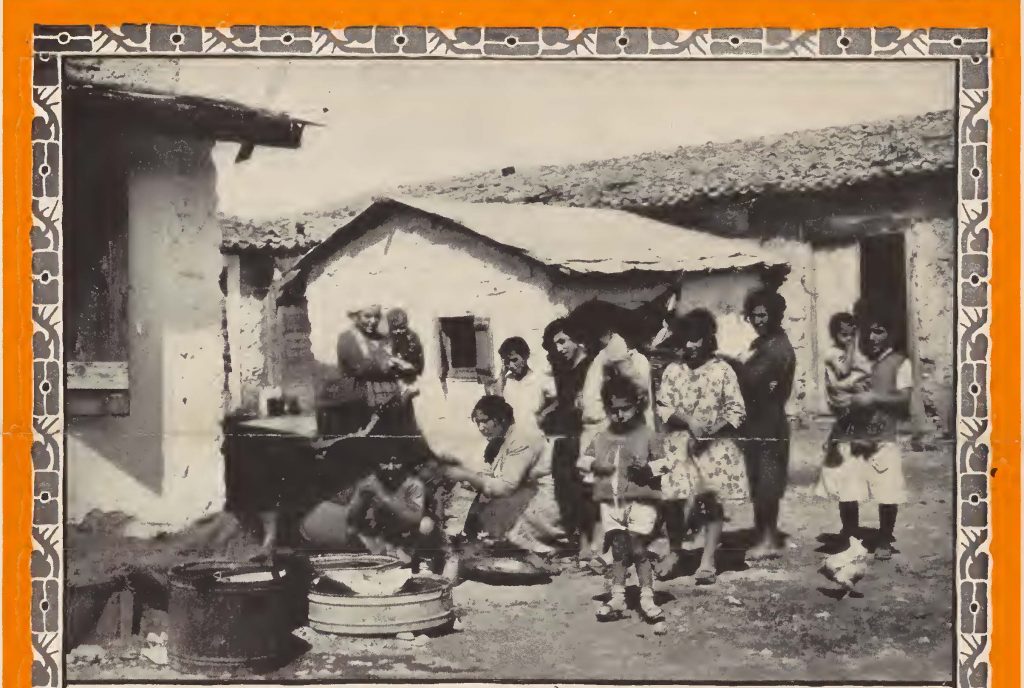
Near East Foundation beneficiaries in a brochure entitled "New Life in Old Lands," c. 1931.
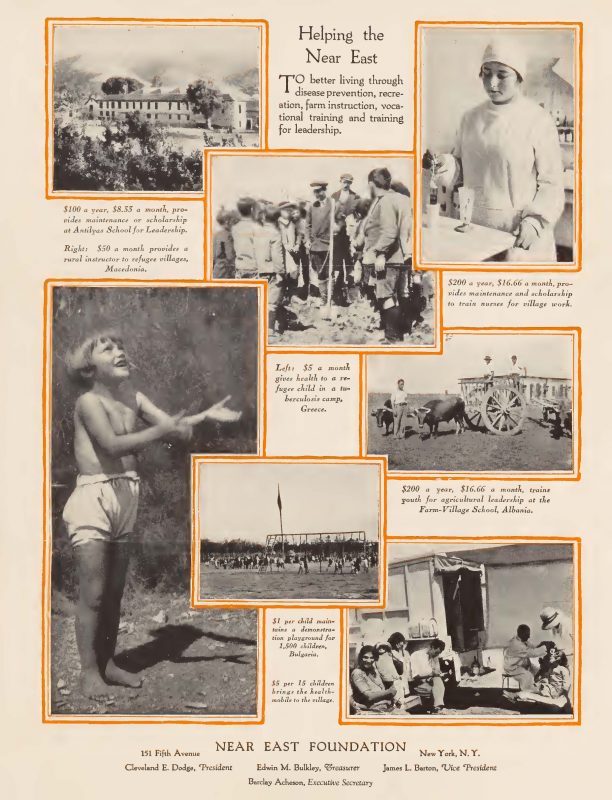
NEAR EAST RELIEF IN TRANSITION
In 1925, Near East Relief’s Board appointed a Survey Commission assess ongoing needs in the Near East. The orphans who were small children when Near East Relief began its work were now young adults seeking livelihoods. Near East Relief began to focus on practical education to prepare these young adults for the future.
The Commission knew that the future would bring big changes to the region and to the organization. It was time to make the transition from relief to development.
Greek Macedonia was a natural laboratory for Near East Relief’s transitional projects. By 1929, approximately 9,000 former Near East Relief orphans had been “out-placed” to farming communities in rural Greek Macedonia. Using the former orphan population as a nucleus, Near East Relief implemented a rural education program that grew to include refugees and native populations.
Left: A Near East Foundation brochure, c. 1931, focuses on health, agriculture, and education.

Map of Near East Foundation activities and proposed programs, 1930.
THE NEAR EAST FOUNDATION IS BORN
In 1930, we added a fifth name to the list: the Near East Foundation (NEF). This new name reflected a new focus: creating collaborative sustainable development programs that could be replicated in other countries.
Near East Relief staff members like Barclay Acheson, James L. Barton, and Alice Carr facilitated the transition. NEF’s early projects in Greek Macedonia and Lebanon became models for other international programs, including the United States Agency for International Development (USAID) and the Peace Corps. NEF has worked in more than 40 countries over the past century.
The Near East Foundation promotes sustainable, prosperous, and inclusive communities through education, community organizing, and economic development. Names may change, but some things will always stay the same.
Learn more about the Near East Foundation’s current work here.
Today, the Near East Foundation promotes sustainable societies in eight countries in the Middle East and North Africa. Morocco, 2012.
